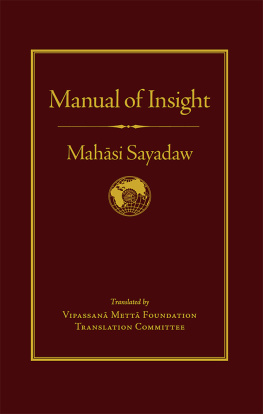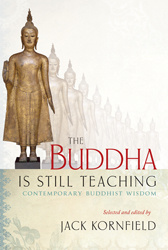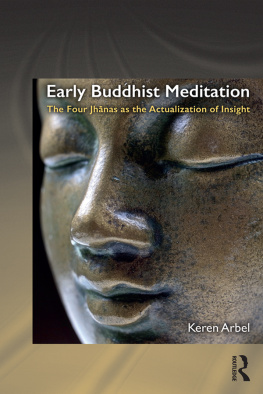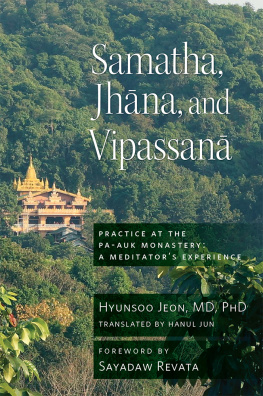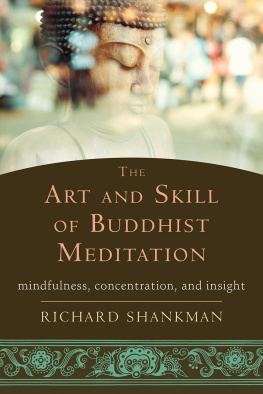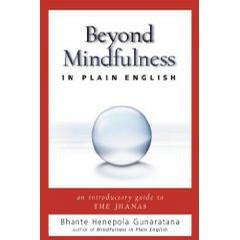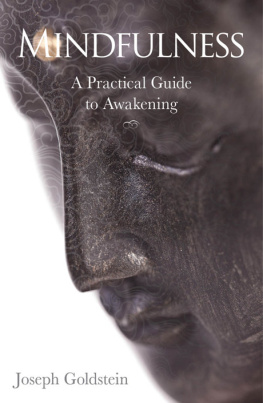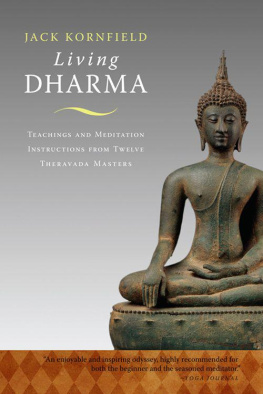Wisdom Publications
199 Elm Street
Somerville, MA 02144 USA
wisdompubs.org
2016 Vipassan Mett Foundation
All rights reserved.
No part of this book may be reproduced in any form or by any means, electronic or mechanical, including photography, recording, or by any information storage and retrieval system or technologies now known or later developed, without permission in writing from the publisher.
Library of Congress Cataloging-in-Publication Data
Names: Sobhana, Mah ca Cha r to A rha, 19041982, author.
Title: Manual of insight / Mahasi Sayadaw ; translated and edited by the
Vipassan Mett Foundation Translation Committee.
Other titles: Wpthna sh n kyn. English
Description: Somerville, MA : Wisdom Publications, 2016. | Includes
bibliographical references and index. | Translated from Burmese and Pali.
Identifiers: LCCN 2015041172 (print) | LCCN 2016008923 (ebook) | ISBN
9781614292777 (hardback) | ISBN 1614292779 (hardcover) | ISBN
9781614292913 (Ebook) | ISBN 9781614292913 (ebook) | ISBN 1614292914
(ebook)
Subjects: LCSH: Vipayan (Buddhism) | BISAC: RELIGION / Buddhism / Rituals
ISBN 978-1-61429-277-7 ebook ISBN 978-1-61429-291-3
20 19 18 17 16
5 4 3 2 1
Design by Gopa & Ted 2. Set in Diacritical Garamond 13.92/11.9.
VIPASSAN METT FOUNDATION TRANSLATION COMMITTEE
Project Advisor
Sayadaw U Paita (Paitrma Shwe Taung Gon Sasana Yeiktha, Yangon, Myanmar)
Managing Editor
Steve Armstrong
Translators
Hla Myint
Ariya Baumann
Abhidhamma and Pi Research Consultants
Sayadaw U Janaka (Chanmyay Yeiktha, Yangon, Myanmar)
Sayadaw U Indaka (Chanmyay Myaing Meditation Center, Yangon, Myanmar)
Sayadaw U Sgara (Chanmyay Myaing Study Monastery, Hmawbi, Myanmar)
Hla Myint (Myanmar and USA)
Akicano (Marc Weber) (Germany)
Pi Quote Citations, Glossaries
Ven. Vra
Abhidhamma Charts
Steve Armstrong
Editors
Ven. Vra
Steve Armstrong
Ariya Baumann
Deborah Ratner Helzer
Kamala Masters
Funding provided by Vipassan Mett Foundation
All proceeds from the sale of this book will be used to freely distribute copies to Buddhist monastics, libraries, and meditation centers, and to support opportunities to practice the method outlined in the book.
For further information and to report errors, please visit: www.mahasimanualofinsight.org
Namo tassa bhagavato arahato sammsambuddhassa!
Without equal is the Omniscient Buddha of nine attributes!
Without equal is the Dhamma of six attributes!
Without equal is the Sagha of nine attributes!
When we reflect in this way, the mind becomes particularly clear and delighted. At that moment we observe the mental states of reflection, clarity, and delight as well as the physical phenomena that depend on these mental states as they arise. May virtuous people who practice as instructed in this book attain path, fruition, and nibbna in this very life. Thus have I composed this manual on the practice of insight meditation.
Publishers Acknowledgment
The publisher gratefully acknowledges the generous contribution of the Hershey Family Foundation toward the publication of this book.
The Venerable Mahsi Sayadaw, one of the foremost Burmese monks of the twentieth century, played a critical role in disseminating the liberation teachings of early Buddhism. He was a rare example of someone who combined the most extensive and thorough knowledge of the Pali texts with the wisdom that comes from the deepest realizations of meditation. The range of both his theoretical and practical understanding was acknowledged when he was asked to be the chief questioner at the Sixth Buddhist Council, held in Yangon in 1954.
In his teaching role, Mahsi Sayadaw was largely responsible for the widespread practice of vipassan, or insight meditation. In Burma he established hundreds of meditation centers around the country where ordinary lay practitioners, as well as monastics, could come and receive instruction and guidance in Satipahna meditation, the practice of the Four Foundations of Mindfulness, which the Buddha declared to be the direct path to liberation. In these centers and those in other Asian countries, hundreds of thousands of people were introduced to this meditation practice. Through his disciples these teachings were later brought to India, the birthplace of the Buddha, and then to the West.
The widespread introduction of mindfulness now taking place in America and other Western countries has its roots largely in the teachings of Mahsi Sayadaw, and his great ability to convey the practical means of awakening. Although mindfulness in its secular applications has tremendous benefits, its helpful to remember that the original teachings of the Buddha are about liberationthat is, freeing the mind from those mental states that cause suffering to oneself and others.
In this extraordinary work, Manual of Insight, Mahsi Sayadaw explains in depth and great detail the entire path of practice, beginning with the Purification of Conduct and ending with the realization of Nibbana, the highest freedom. It integrates some of the most abstruse elements of theoretical knowledge with the most direct and accessible practical teachings. Manual of Insight is a text to study slowly, it is a reference work to deepen our understandings, and it is ultimately a guide for our own path of awakening.
In Manual of Insight, the Burmese meditation master Mahsi Sayadaw offers a gift from an ancient wisdom tradition that speaks to the urgent needs of the modern world. Many of the teachers who brought vipassan, or insight meditation, to the West studied with Mahsi Sayadaw or his students. And now that mindfulness meditation, a modified form of insight vipassan, has become so popular, the time is auspicious for this deep explanation of the full path that mindfulness begins.
My own connection with these teachings was through studying with students of Mahsi Sayadaw, mainly Sayadaw U Paita, with whom my wife Tara Bennett-Goleman and I spent remarkably fruitful time on retreat. Sayadaw U Paita has taken pride in following to the letter the path set out in the Manual of Insight. In contemporary vernacular, Sayadaw U Paita uses the term SQ, spiritual intelligence, to refer to the deep insights and practical tools contained in Manual of Insight, the method he has taught to thousands of students in Burmaincluding Aung San Suu Kyiand around the world.
From my perspective, SQ describes the spiritual level of emotional intelligence. The keystone in emotional intelligence is self-awareness, and vipassan gives us that ability in the most profound way. With this lens on our mind and body we can re-experience the comings and goings in our own phenomenology in a fine-grained way that breaks down the illusory sense of self that cognitive science tells us we synthesize from disparate internal inputs, weaving together these random parts into an ongoing personal narrative. That narrative, we can see with vipassan, hides more essential truths about our true nature.
Then there is self-regulation, the many ways in which we routinely apply that self-awareness to manage our lives. With vipassan comes sla, the voluntary self-discipline essential to balancing and focusing our mind freed from the routine distractions and attachments of our daily lives. With this self-discipline we can create an oasis in our life where the deep introspection of vipassan allows us to experience deeper truths about our very being.

